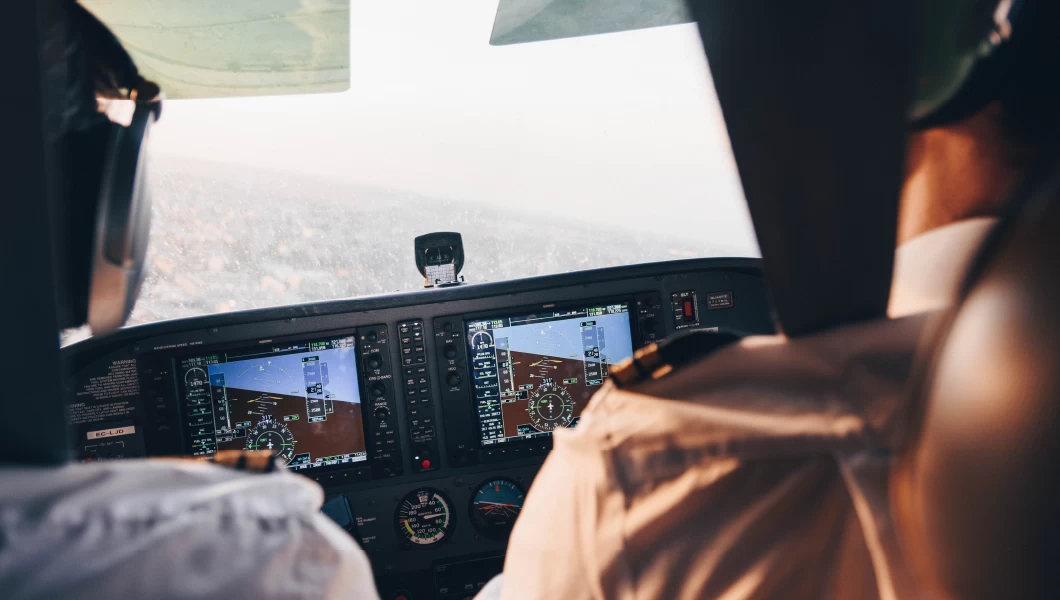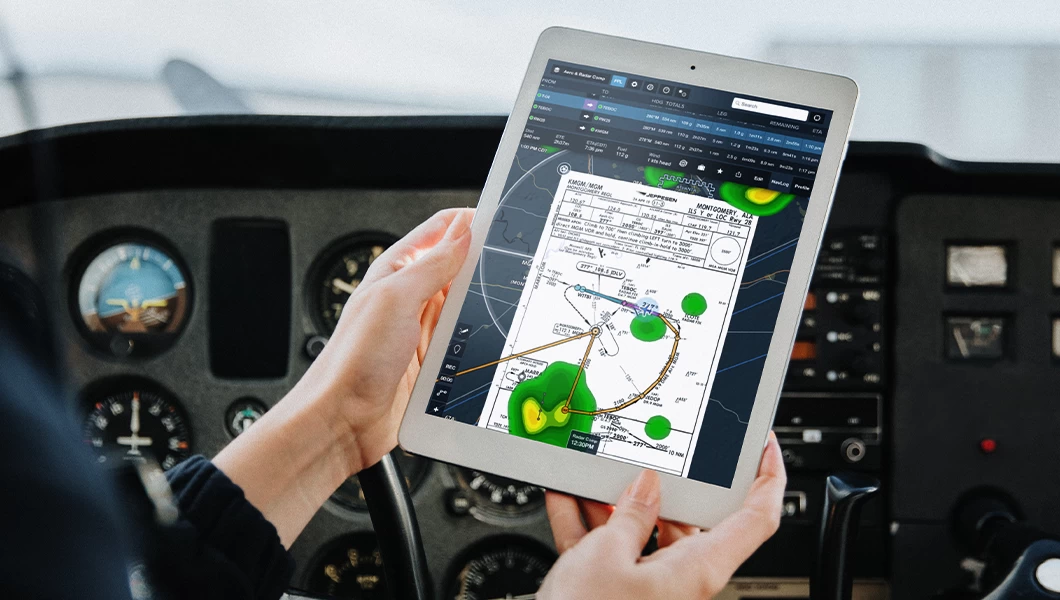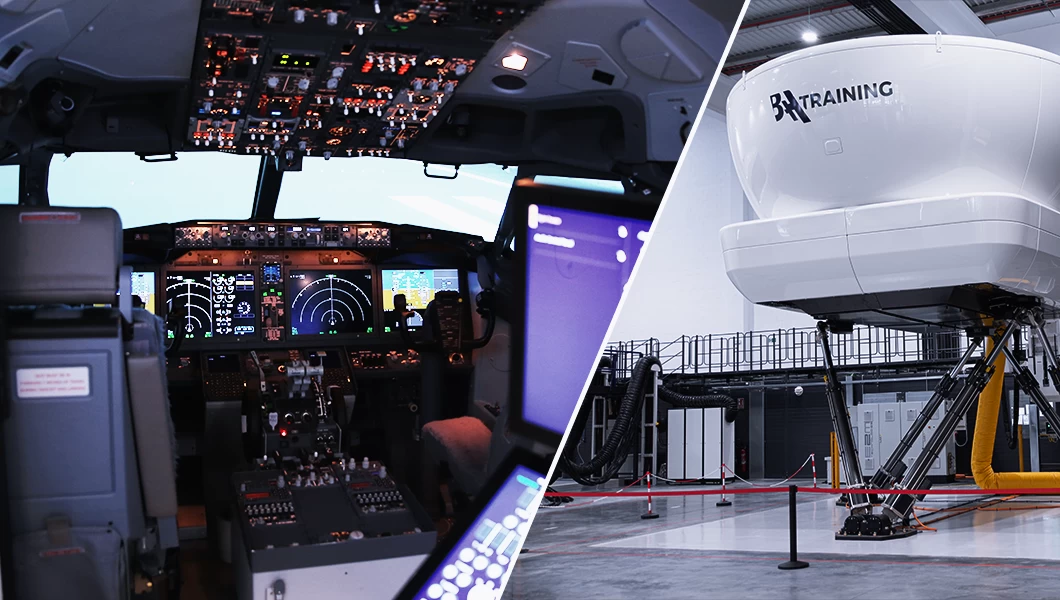No, it’s not a six-pack of your favorite beverage to calm those pre-flight nerves either; it’s the crucial basic flight instruments that keep pilots on the straight and level. These are the MVPs of avionics and the unsung heroes of every successful flight.
The pilot (and the instrument-equipped aircraft) have to be able to cope with limited visibility—thick clouds, heavy mist, smog, rain, snow, or nighttime flights. In these conditions, the natural horizon and ground features are very difficult, and in some cases impossible, to see. This is where the pilot needs to be able to navigate counting on instrument flight rules (IFR) as opposed to visual flight rules (VFR).
The aviation six-pack
It’s important to note that while the six pack does make up the key operational instruments on board, it’s not the only one. Typically, aircraft instruments are categorized into three groups:
- Flight Instruments
- Engine Instruments
- Navigation Instruments
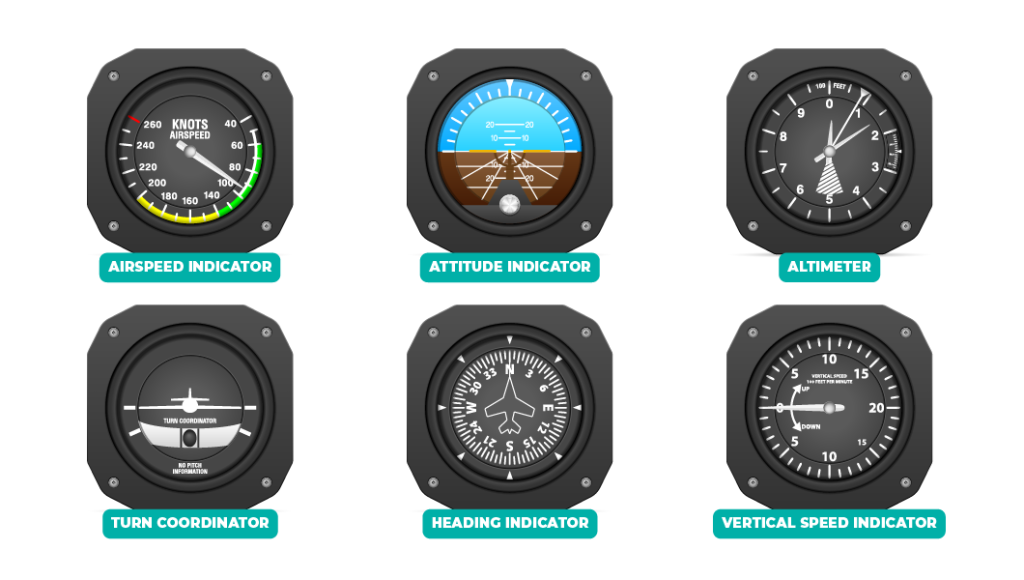
The six flight instruments—or the six pack—fall under the flight instruments category. The distinction we have to make here is that most modern aircraft are equipped with what is known as a ‘glass cockpit’; this is the six-pack in its digital form rather than analog. The information is displayed on-screen in an easier-to-read way than the analog counterpart, which relies on gauges—dials, and knobs. But we will come back to the glass cockpit a bit later.
So, what are these six instruments?
Airspeed Indicator (ASI)
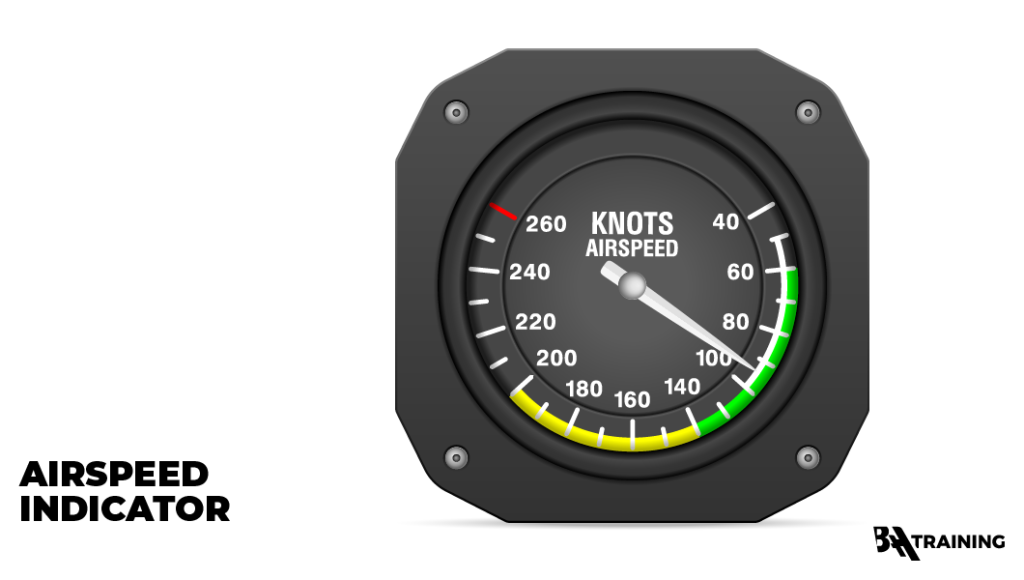
Airspeed indicator measures a plane’s speed—no shocking surprise there. Measured in knots (1 knot = ~1.85 km/h), the aircraft speed affects not only the overall performance but also systems like flaps and landing gear, which have their limitations based on speed.
The color coding on the Airspeed Indicator provides pilots with speed ranges. Colors are universal, and only the display itself may vary depending on the aircraft type.
Green arc
Indicates the normal operating speed range. Operations at the speeds within the green should be safe in all conditions, including turbulence.
Yellow arc
Indicates the caution range. The aircraft could be operated in these airspeeds only in smooth air.
White arc
Indicates the flap operating range.
Red line
Indicates the ‘never exceed’ speed.
Altimeter

The Altimeter is an aneroid barometer that measures the aircraft’s altitude above mean sea level without liquid (as would a traditional barometer). Since an aircraft, unlike a car for example, has to be navigated in three dimensions, the Altimeter is key for vertical navigation. It’s also vital in determining height above a runway during an instrument approach when landing in poor visibility.
The conventional Altimeter display has three pointers (hands) that, when added together, provide the final pressure reading. The long, thick pointer measures in 100s of feet, the short, wide pointer in 1,000s, and the thin, long one in 10,000s of feet (and the easiest to misread).
A digital Altimeter has a readout of height, accompanied by a single pointer, indicating 100s of feet and only the last three digits of it. This is the most easily understood Altimeter presentation.
Similar ARTICLES
Pop quiz: if you were flying at a pressure altitude of 13,200, what numbers would each conventional Altimeter pointer show?
Vertical Speed Indicator (VSI)
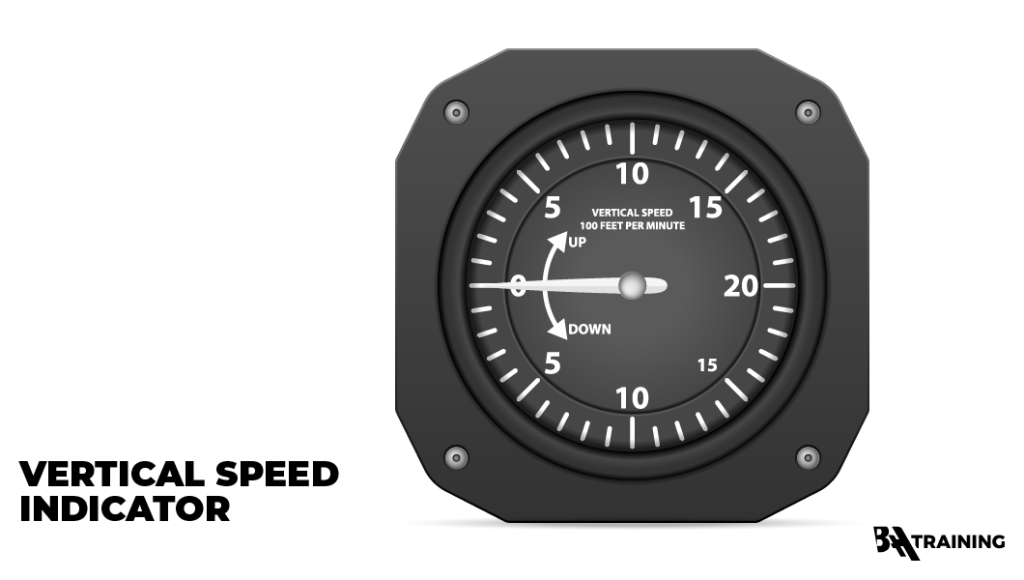
The Vertical Speed Indicator allows the pilot to monitor their rate of climb or descent. The dial is usually marked in 100s of feet on either side of zero with ‘up’ and ‘down’ clearly indicated. It’s also very useful when trying to achieve a precise level flight. In smooth air, VSI will respond more quickly to an altitude change than an altimeter and, in turn, allow to correct the pitch attitude. In rough air, on the other hand, the vertical speed indicator fluctuates and is less accurate.
Attitude Indicator (AI)
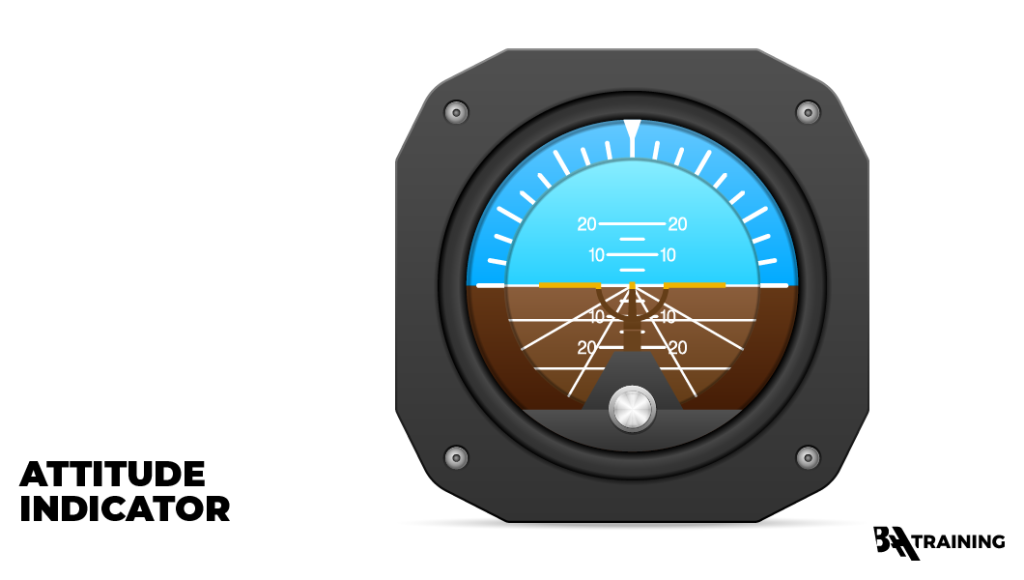
Another one of aircraft instruments, the Attitude Indicator, surprisingly has nothing to do with measuring how sassy a pilot is during the flight. Actually, it’s the only instrument that gives an immediate and direct picture of pitch attitude and bank angle and represents the position of the airplane in relation to the horizon.
A pair of “wings” represents the attitude of the aircraft. Behind the “aircraft” is a ball—the top is blue, which indicates the sky and the bottom half is usually brown, indicating the ground. As the airplane maneuvers in the air, the pair of wings will show the degree of bank and pitch attitude.
The AI employs a gyroscopic instrument, utilizing a gyroscope to maintain the stability of a horizon bar aligned parallel to the actual horizon.
Your PILOT CAREER
starts with a first click
Heading Indicator (HI)
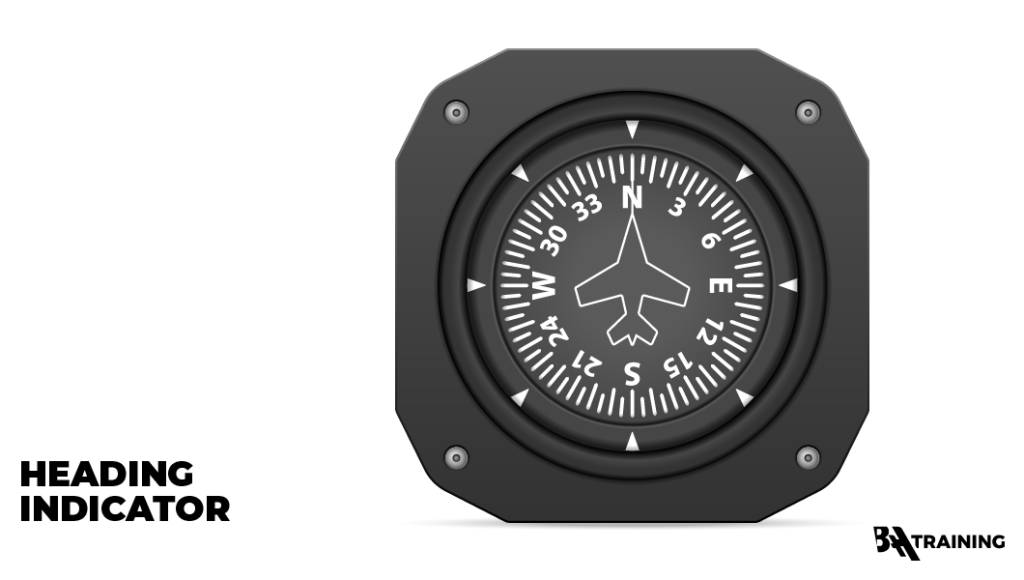
The Heading Indicator (also called Direction Indicator or Directional Gyro) is essentially a non-magnetic compass. It contains a gyroscope with a lateral horizontal spin axis that provides short-term directional stability. One thing about the HI is that it will gradually drift off direction. That is why a pilot needs to readjust the HI every 15 minutes or so with the magnetic compass. In modern aircraft, HI is used together with a magnetic compass for better accuracy.
Turn Coordinator (Turn Indicator)
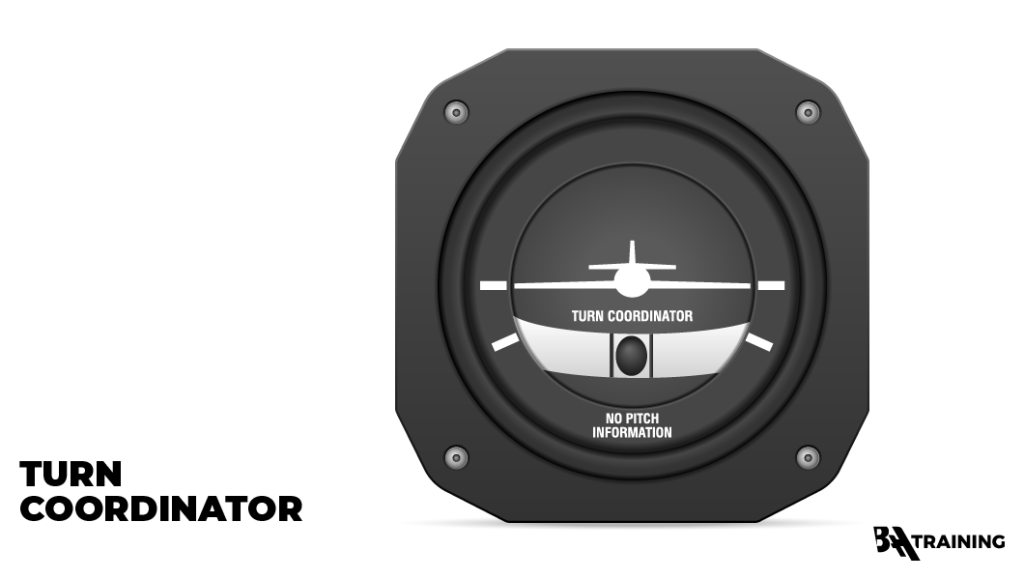
The Turn Coordinator gives pilots a reading of their wing attitude—if they’re straight and level.
When an aircraft experiences slipping or skidding in a turn, the ball (inclinometer or balance indicator) located in the lower section of the Turn Coordinator will deviate from the center. In a properly coordinated turn, the ball should stay centered. If it’s off-center, the pilot then needs to make necessary adjustments to the turn.
And these are the so-called six-pack flight instruments, which make up the base of the actual flight, be it your first solo on a Cessna or a specific aircraft type like Airbus, for example. However, as we mentioned before, most modern aircraft have left behind the dials and now operate on glass cockpits.
Reading a glass cockpit
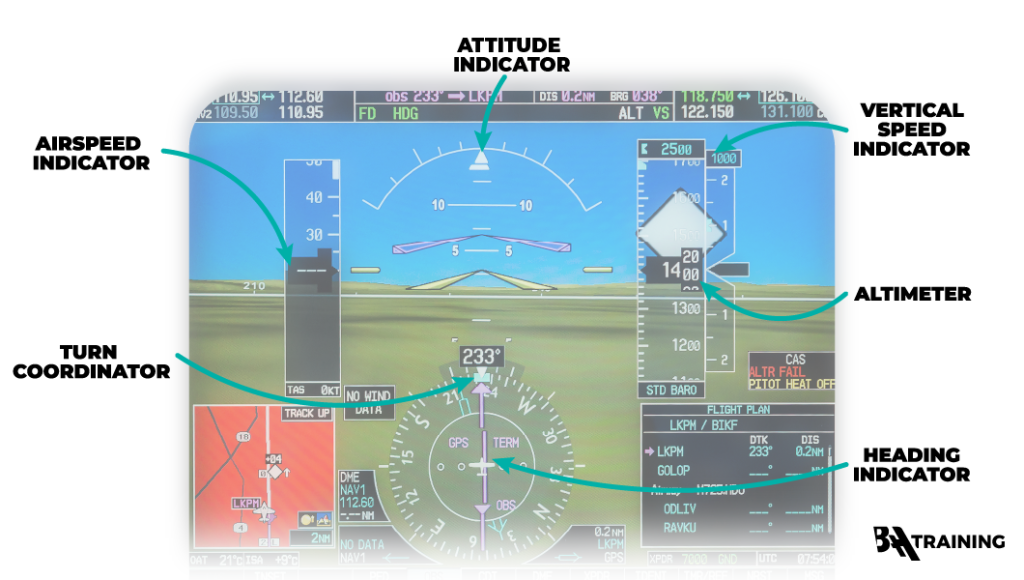
A glass cockpit uses several computer displays that can be adjusted to show flight information as needed. This makes aircraft operation and navigation much easier, allowing pilots to focus only on the most crucial information.
Instead of using gyroscopic instruments, glass cockpits are equipped with electronic Attitude and Heading Reference Systems (AHRS) and Air Data Computers (ADCs), which don’t rely on any vacuum-driven system. They are lighter, more accurate, and have greater reliability.
Instrument scanning
One more skill that a pilot must learn is the six-pack scanning. It takes practice to master the art of scanning and interpreting the instruments, but it will become second nature through training. There is a variety of scanning a pilot might perform. For a simple scan, for example, when checking for altitude, airspeed, vertical, and others, the pilot begins with their eyes on the Attitude Indicator and then simply moves their eyes to another gauge, depending on what they are scanning for, and back to AI.
The ‘Basic T’ scan, on the other hand, is usually done for a straight and level flight. Here, altitude, direction, and airspeed need to be monitored. The pilot’s eyes are centered on the AI and move back and forth in a ‘T’ pattern to scan the relevant instruments: AI to HI, AI to Altimeter, and AI to ASI.
Bottom line
While there is a lot more work going on in an aircraft operation, understanding basic flight instruments is the essential groundwork for stepping onto a plane and completing a flight successfully. Master this and your time in the sky will be that much more enjoyable!
